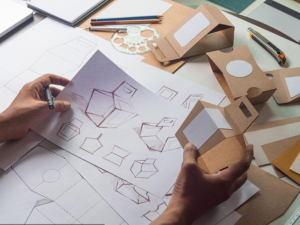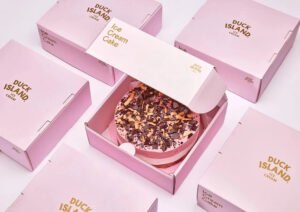Paper gift boxes play a central role in luxury and consumer goods packaging. For brands and buyers in cosmetics, fragrance, food, or jewelry sectors, the structure and craftsmanship of a box define not only how it protects the product, but also how it communicates brand identity and perceived value.
This guide summarizes the main structural types of rigid paper boxes and outlines the essential manufacturing process behind premium paper packaging.
01. Classification of Paper Gift Boxes
By Covering Material
- Paper Materials – Metallic, pearlescent, and specialty art papers are widely used for high-definition printing and refined surface effects.
- Leather or PU – Adds sophistication and durability, commonly used for premium gift sets and collector’s editions.
- Fabric – Cotton or linen coverings convey natural aesthetics and eco-friendly appeal, aligning with sustainable packaging trends.
By Application
- Cosmetics & Fragrance – Packaging for perfumes, skincare sets, and makeup collections.
- Alcohol & Spirits – Used for whiskey, wine, and premium liquor boxes.
- Food & Confectionery – Popular for chocolate, mooncake, and tea gift packaging.
- Jewelry & Accessories – Designed for display and product protection.
- Electronics & Lifestyle – Used for mobile phones, watches, and smart devices.
02. Common Gift Box Structures
Lid and Base Box
Also called a rigid setup box, it consists of a separate lid and base. Its simple yet sturdy structure makes it ideal for luxury packaging across multiple industries.

Book-Shaped Box
Opens like a hardcover book with an outer shell and inner tray. The magnetic flap and flat opening offer an elegant unboxing experience.

Double Door Box
A symmetrical box opening from the center, often combined with ribbons or magnets. This structure highlights a sense of balance and refinement.

Drawer (Slide) Box
The sliding drawer design adds practicality and a sense of discovery. Common in cosmetics, jewelry, and tech packaging.

Round Box
Cylindrical or oval rigid boxes stand out visually and are often used for fragrances, candles, or high-end confectionery.

03. Paper Gift Box Manufacturing Process
Production Flow:
Printing → Surface Finishing → Wrapping Material Die-Cutting → Greyboard Die-Cutting → V-Grooving → Box Forming → Wrapping & Assembly → Inspection & Packing
Each step directly impacts the precision, durability, and visual quality of the finished box.
Paper Selection
The choice of paper determines the overall tactile feel and print quality. Coated, art, or textured paper are common. The paper must balance flexibility and strength — too thick causes cracks during wrapping, too thin weakens structural integrity.
Surface Finishing Techniques
Finishing adds both aesthetic and tactile value. Typical methods include:
- Hot Foil Stamping (gold, silver, or holographic) for visual highlights.
- Spot UV for selective gloss and contrast.
- Lamination (gloss, matte, or soft-touch) for protection and texture.
- Embossing / Debossing for dimensional appeal.
These treatments enhance brand recognition and consumer engagement.
Greyboard Selection
Greyboard forms the structural base of rigid boxes. Depending on the product weight and design, brands may choose between single-grey, full-grey, or laminated greyboard for maximum stability.
Die-Cutting & V-Grooving
Precision die-cutting ensures consistent shapes and smooth edges.
V-grooving, where a V-shaped groove is cut into the greyboard, allows crisp folding lines and sharp box corners — a key indicator of craftsmanship in rigid packaging.
Wrapping & Assembly
Printed or textured wrapping paper is laminated onto the greyboard. Automated gluing and positioning systems ensure seamless edges and clean corners. A final quality inspection checks every unit for surface defects, alignment, and structural strength before packing.
04. Why Structure and Process Matter in B2B Packaging
For buyers and brand owners, understanding box structures and production flow helps in communication with suppliers and ensures design feasibility. A well-designed structure can:
- Reduce material waste and logistics costs.
- Improve product presentation and consumer experience.
- Support sustainable packaging goals through responsible material choices.
Collaborating with an experienced packaging manufacturer means you can adjust paper selection, finishes, and structure early in the design phase — achieving both aesthetic and functional goals within budget.
Behind every elegant paper gift box lies a precise, technical manufacturing process. From the choice of material to the last fold, each detail defines quality and brand perception.
For B2B buyers, understanding these structures and workflows is the key to specifying the right packaging solution — one that protects the product, supports brand storytelling, and enhances market appeal.



